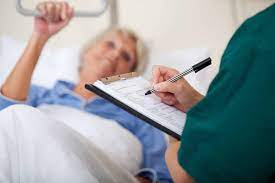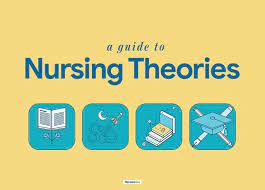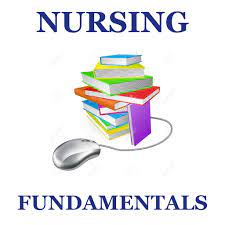Nursing care: Concept Analysis Critique
Introduction
The concept analyzed in this article is nursing care. Evidently, nursing scholars, theorists, and healthcare professions have varying interpretations of the concept. However, in the middle of these disparities, nursing care is a vital aspect of nursing practice and a beneficial factor for both patients and nurses.
Several studies have explored the meaning of the concept (from both nurses and patients perspective) with the aim of identifying the relationship between nursing caring and patient satisfaction. Most textbooks, scientific articles, ethical codes and legal documents use the term nursing as a synonym to caring which are characterized as a nurse’s main ethical obligation (Dalpezzo, 2009).
Therefore, the aim of this concept analysis critique is to help clarify the vague concepts such that every person using it speaks the same thing. This is important in healthcare discipline because it helps people to develop knowledge related nursing concepts.
The overall intention of this analysis to provide a meaningful nursing care concept that can be used by nurse researchers and theorists to get its deeper insights and to identify better means that can be used to assess this complex nursing concept. The specific aims for this concept analysis article critique is; a) to clarify the nursing care concepts, b) identify the strengths of this article in clarifying the nursing concepts and c) to identify the weakness and d) to highlight its implication for practice.
Strengths
The concept analysis criterion background and purpose is clearly described which is to explore the concepts of nursing care and its essence with the aim of developing an operational definition of nursing care (Dalpezzo, 2009, p. 256). Also, the article analyzes the relevant literature to determine the definitions of the nursing care concept terms and in arriving at the core defining attributes of the nursing concept.
For instance, the researcher uses Dictionary.com Unabridged v 1.1, 2006a and the American Heritage Dictionary of the English to define the term ‘care’ and ‘nursing.’ The article also explores the basic definitions of the words ‘caring’ and ‘nursing’ in major nursing models and nursing theories (Dalpezzo, 2009, p. 259).
The author also explores the definition of the concept nursing care from the allied health literature; where he reviewed 16 randomly selected peer-reviewed articles. This research ensured that the analysis of the concept is done extensively, making it clear, distinct and is unambiguously differentiated from the other nursing concepts.
The author develops the definition of the nursing concept in logically, and the discussions of the empirical referents and antecedents are clear. For instance, the author begins by identifying the purpose of the study. This is followed by a brief description of Walker and Avant’s concept analysis method. To start with, the rationale for the selection of the concept nursing care is well outlined which is the lack of clear definition within the nursing literature (Dalpezzo, 2009).
The article describes the purpose of the analysis and clearly identifies the uses of the nursing care concepts in different disciplines. The author also determines concepts defining attributes which include a) nursing care procedures- those needed by patients, b) nature of nursing care – including the high quality of care, nursing skills, safe, holistic and evidence-based, and c) the core functions of nursing care including listening, assessing, preventing, advocating.
The concept is further developed by reviewing additional cases to identify the antecedents and the consequences and to define the concepts empirical referents. This extensive research to define nursing care concept ensures that the analysis of the concept is accurately developed and illuminated (Dalpezzo, 2009).
Weakness
Nursing discipline has set forth an explicit desire to serve the public and commitment to the overall well-being of the society. Therefore, concept analysis is performed to refine the definition of nursing care, with the aim of differentiating it from other similar or dissimilar concepts. The concept analysis of nursing care outlines the focus and boundaries of nursing discipline and also highlights the aspects of the concept that are significant to nursing practice, and can be traced back to the nursing field fundamental concepts(Dalpezzo, 2009).
The terms, meanings, usages, definition and attributes are derived from the nursing care concept analysis is derived from dictionaries, thesauruses, Walker and Avant (2005) method and the current literature. The term nursing care is used throughout the disciplines allied to health, but its meaning is not clear. There are varied themes of nursing care concepts in the literature which present the world’s views and perceptions about nursing care.
However, the concept analysis is limited in that the definition of nursing care concept is a context- based activity; however, the activities differ between the operational environments and the measures or methods used to assess the nursing care outcomes (Koy, Yunibhand, Angsuroch, 2015).
Also, the concept analysis is limited because the attributes gathered from the literature are the only ones used to define nursing care concepts. For instance, the description of nursing care concept from the literature ranges from general conceptions of just being helpful to include divine oriented interventions.
Therefore, the lack of clear definition of nursing care concept in the context of socio-cultural and religious aspects is the greatest dilemma associated with quality nursing practice because it hinders nurse’s efforts to meet patient’s socio-cultural needs. Therefore, future nursing care concepts should put into consideration the cultural contexts (Koy, Yunibhand, Angsuroch, 2015).
Implication for practice
Caring is a complex universal phenomenon and is deeply rooted in the primitive society. For instance, women care for their children and other dependent members of the family. Women involvement in all aspects of care is common in many cultures (Sarpetsa, Tousidou, & Chatzi, 2013). Also, the word ‘nursing’ is highly connected to the term ‘care.’
Nurses deliver nursing care to other people with the aim of maintaining and promoting their health during illness, ordeal or disability. Care is an important element of nursing; and that the conception of the term ‘care’ in nursing affects the way it is delivered. Therefore, people’s perception, experiential, and socio-political aspects of nursing influence provision of care (Schrijvers et al., 2012).
Nursing care is a continuous phenomenon that follows human existence since the time they are born to death. According to Institute of Medicine (IOM) study, nursing care is patient-centric and is directly linked to quality and safety. Nurses have the potential to foster a quality healthcare environment through various ways (Kvist et al., 2014). Nursing care starts with non-verbal communication between the nurses and patients.
It has been found that emotions expressed by nurses towards their patient have an effect on their outcomes, with positive emotions improving their recovery rate. Also, it is through emotional empathy, a respectful, and trusting relationship with the patients is established. Patient-centric care provides a distinct advantage of consistent daily assessment of the patient’s health condition which allows the nurses to detect slightest changes in patients health that require them to proactively make some modifications to the patient care plan when needed (Cheung et al., 2008).
Addressing the variance in nursing care perception is important when interpreting inconsistencies of the concept in nursing literature because it affects patient care outcomes. Nursing care also influences the quality of interaction by the healthcare team (Samina et al., 2008).
While caring is vital between patients and nurses, it is equally important for the healthcare staff because it helps the team to adapt and work together and to understand each person’s individual responsibilities and to provide constructive feedback. Every nurse is a leader because they are in a unique position to make a difference in patient’s recovery. The concept of nursing care facilitates communication, especially when implementing care plans for the patients (Sarpetsa, Tousidou, & Chatzi, 2013).
At administration level, nurses utilize their hands on experience (nursing care) to identify the most effective strategies to delegate the available healthcare recourses to ensure positive patients outcome. Therefore, this concept analysis ensures that one gain the knowledge and technical know-how so that they car skilfully integrate their knowledge into practice (Sarpetsa, Tousidou, & Chatzi, 2013).
Understanding the concepts of nursing care helps one understand the nursing discipline, its culture and the changes needed to make changes that positively impact on the patient’s health outcomes. Tapping into the sufficient knowledge developed by the nursing care concepts analysis, nurses can foster a combination of personal skills, evidence-based practice to collaboratively improve patient outcomes (Schrijvers et al., 2012).
References
Cheung, R. B., Aiken, L. H., Clarke, S. P., & Sloane, D. M. (2008). Nursing care and patient outcomes: international evidence. Enfermeria Clinica, 18(1), 35–40.
Dalpezzo, N.K. (2009). Nursing Care: A concept analysis. Nursing Forum 44(4); 256- 264
Koy, V., Yunibhand, J., Angsuroch, Y. (2015). Nursing care quality: a concept analysis. International Journal of Research in Medical Sciences 3(8): 1832- 1838 DOI: http://dx.doi.org/10.18203/2320-6012.ijrms20150289
Kvist, T., Voutilainen, A., Mäntynen, R., & Vehviläinen-Julkunen, K. (2014). The relationship between patients’ perceptions of care quality and three factors: nursing staff job satisfaction, organizational characteristics, and patient age. BMC health services research, 14(1), 466.
Samina, M., GJ, Q., Tabish, S., Samiya, M., & Riyaz, R. (2008). Patient’s Perception of Nursing Care at a Large Teaching Hospital in India. International Journal of Health Sciences, 2(2), 92–100.
Sarpetsa, S., Tousidou, E., & Chatzi, M. (2013). The Concept of” Care” as Perceived by Greek Nursing Students: a Focus Group Approach. International Journal of Caring Sciences, 6(3), 392.
Schrijvers, G., van Hoorn, A., & Huiskes, N. (2012). The care pathway: concepts and theories: an introduction. International Journal of Integrated Care, 12(Special Edition Integrated Care Pathways), e192.
Want help to write your Essay or Assignments? Click here









